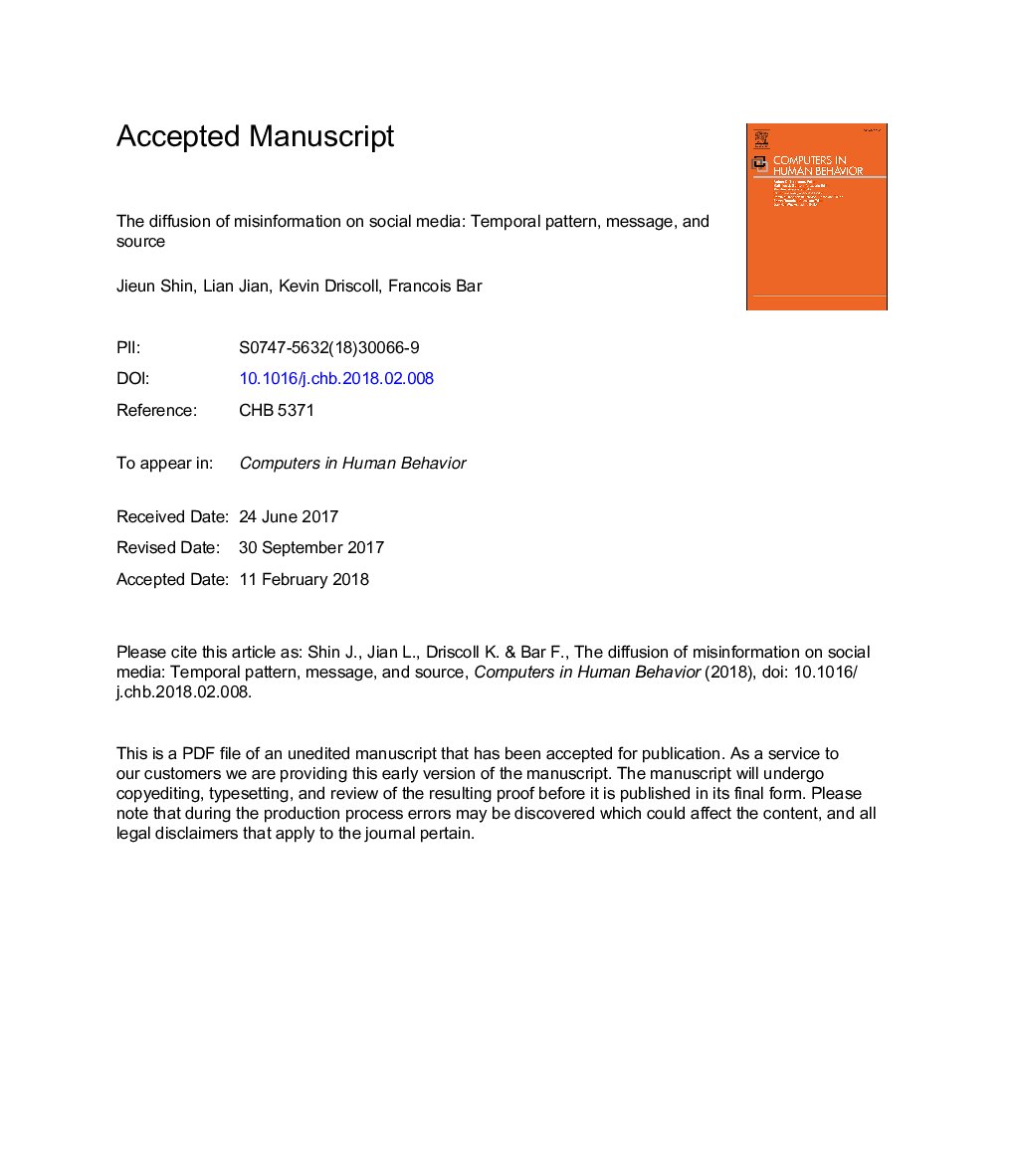| Article ID | Journal | Published Year | Pages | File Type |
|---|---|---|---|---|
| 6836124 | Computers in Human Behavior | 2018 | 39 Pages |
Abstract
This study examines dynamic communication processes of political misinformation on social media focusing on three components: the temporal pattern, content mutation, and sources of misinformation. We traced the lifecycle of 17 popular political rumors that circulated on Twitter over 13 months during the 2012 U.S. presidential election. Using text analysis based on time series, we found that while false rumors (misinformation) tend to come back multiple times after the initial publication, true rumors (facts) do not. Rumor resurgence continues, often accompanying textual changes, until the tension around the target dissolves. We observed that rumors resurface by partisan news websites that repackage the old rumor into news and, gain visibility by influential Twitter users who introduce such rumor into the Twittersphere. In this paper, we argue that media scholars should consider the mutability of diffusing information, temporal recurrence of such messages, and the mechanism by which these messages evolve over time.
Related Topics
Physical Sciences and Engineering
Computer Science
Computer Science Applications
Authors
Jieun Shin, Lian Jian, Kevin Driscoll, François Bar,
